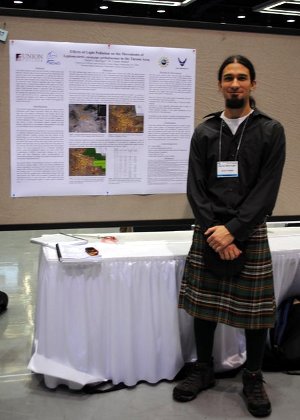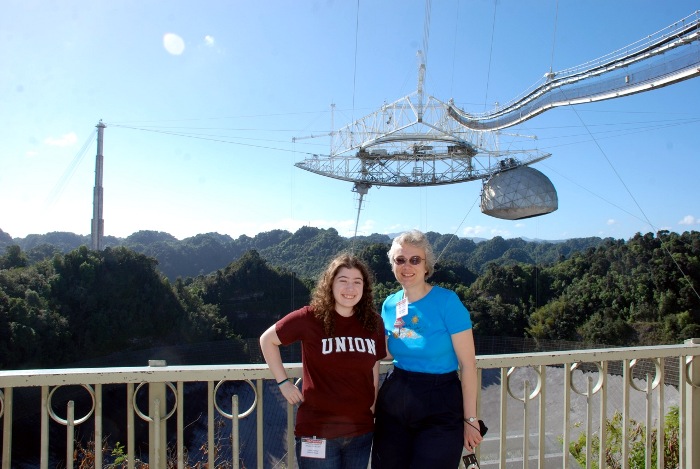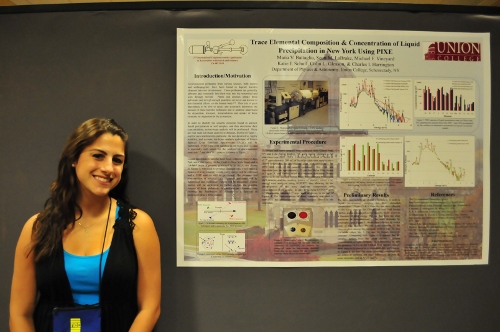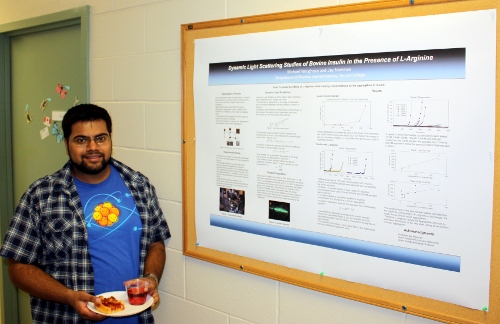Katelyn O’Brien, ’11, and Daniel Barringer, ’11, presented posters about their research at the 217th meeting of the American Astronomical Society meeting in Seattle, WA, in January.

Observations Of ALFALFA Gas-rich Galaxies In NGC 5846″, the poster described Katelyn’s analysis of star formation from images of galaxies obtained at the Cerro Tololo National Observatory in Chile through Union’s participation in the Small and Moderate Aperture Research Telescope System (SMARTS) consortium. Katelyn is pursuing a major in physics and minors in astrophysics and Spanish.

The Tucson Area.” Daniel used data from the GLOBE at Night project and telemetry-tracking data to study the effects of light pollution on the flight paths of the lesser long-nosed bats between their day roosts and night foraging areas around the city of Tucson, AZ, finding that these bats are able to tolerate a fair degree of urbanization. Daniel was one of 6 students selected from a pool of 157 applicants from across the US to be awarded an REU internship at Kitt Peak in summer 2010. Daniel is a physics major and astrophysics minor.
The American Astronomical Society is the major organization of professional astronomers in North America.


